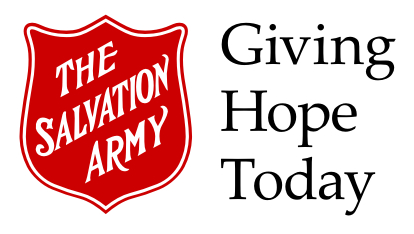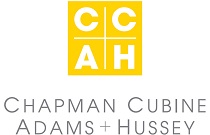
7 Steps to Overhaul a Digital Program
This post was written by guest author Jennifer Huckleby, email marketing and online fundraising specialist, Grizzard Communications Group.
 The digital environment is constantly changing. Grizzard client Union Rescue Mission (URM) came to us in 2011, and requested a strategic plan for integrating the mission’s online and offline fundraising. They saw the need to update their existing digital program to stay current, and felt that integrating their digital strategy would help boost revenue, raise awareness and increase engagement. We provided URM with seven approaches to boost their existing digital program, which included the recommendations below. They are helpful guidelines for all nonprofits.
The digital environment is constantly changing. Grizzard client Union Rescue Mission (URM) came to us in 2011, and requested a strategic plan for integrating the mission’s online and offline fundraising. They saw the need to update their existing digital program to stay current, and felt that integrating their digital strategy would help boost revenue, raise awareness and increase engagement. We provided URM with seven approaches to boost their existing digital program, which included the recommendations below. They are helpful guidelines for all nonprofits.
(Editor’s note: The digital overhaul of the URM website was just awarded the Interactive Media Awards “Best in Class” Award in the Nonprofit category, with an overall judging score of 486 out of 500.)
1. Make your website user-friendly
The challenge:
The website lacked clear focus, a clear call to action, and overall strategic direction.
The solution:
Evaluate and enhance navigation and information. Users want to be able to move through a website quickly to find the information they are looking for. The navigation should be consistent and simple so that users understand where the link will send them. Generally, any page on your site should be reachable within two clicks from the home page. Keeping the user experience on your website friendly to its visitors ensures that any inbound traffic you gain through outside channels will not go to waste.
2. Create an interactive, online gift catalog to increase engagement
The challenge:
Existing donors and potential donors want to know how their support, small or large, is helping the organization achieve its mission of helping those in need.
The solution:
By creating an interactive, online gift catalog, donors can choose a gift that directly impacts the people who count on URM for help. This is a visually impactful way of showing someone how much a gift of $25 can help one person or $75 can help three people, ultimately engaging and raising donor and non-donor awareness and revenue.
3. Enhanced digital tools
The challenge:
URM did not have anything in place to track online, data-driven analytics.
The solution:
Grizzard applied code to all aspects of the website to measure and track all types of metrics, including site traffic, website performance, mobile analytics, conversion rates, and more. Having a full set of performance metrics available has empowered URM and Grizzard to quickly and easily evaluate the effectiveness of messaging, marketing channels, and individual tactics.
4. Streamline the email program
The challenge:
The existing email program had a lack of direction and consistent frequency, and it needed to be incorporated into an integrated program.
The solution:
We analyzed the existing email program and applied best practices, an integrated strategic calendar, testing plan, and redesigned the template format.
5. Create a more robust blog
The challenge:
A sporadically updated blog was giving the URM site the appearance of being stale.
The solution:
Create a strategic plan to regularly post and provide new information and integrate with other online and offline marketing components as available. It’s important to not only make posts but to look for opportunities for new topics and contributors, and to look at the number and type of comments to evaluate how your audience is responding.
6. Update website imagery
The challenge:
The website was not regularly updated, ultimately not reaching its maximum return in online investment.
The solution:
Update the website more frequently with new images to keep visitors interested. Adding new images regularly keeps the site fresh and encourages visitors to come back and see what is new. Routinely changing content, text and graphics builds site traffic and repeat visitors. In addition, search engines typically give higher rankings to sites that are updated regularly.
7. Audit social media program and enhance outreach.
The challenge:
As social media is new and changing, URM asked Grizzard to help find new ways to engage with their constituency and optimize communication.
The solution:
Create a social media calendar to consistently post, add images and respond to current events. Following a calendar will ensure that your organization is leveraging its other online and offline marketing content (thus increasing efficiency), and constantly engaging and raising awareness about the organization with its constituents.
Merging URM’s online and offline presence was not only important but also beneficial. As a result, URM saw an increase of more than $60,500 (15%) in online giving in the first quarter after their digital overhaul, comparing October to December 2011 revenue to 2012.
Bringing Diversity to One of Canada’s Oldest Charities
 For many people, The Salvation Army shield is an iconic emblem of hope for those in need. At no point is that more apparent than during the holiday season when the charity receives a significant amount of public support.
For many people, The Salvation Army shield is an iconic emblem of hope for those in need. At no point is that more apparent than during the holiday season when the charity receives a significant amount of public support.
A national direct mail program at Salvation Army Canada has been the bread and butter of their annual fundraising program, which is complemented by a strong donor retention strategy. As the charitable marketplace becomes increasingly competitive, Salvation Army Canada understood that they would need to add new strategies for donor acquisition to their fundraising toolkit.
Why? Because Canada has grown increasingly diverse ethnically and culturally, and many newer Canadians are not as familiar with the Salvation Army brand. The explosion of media channels and advertising competition has made it more complicated to engage with diverse audiences, and the cost of a mail program is only getting higher (Canada does not have a nonprofit postage rate, only bulk mail discounts).
To overcome the natural attrition among existing donors, a direct mail channel could not be ignored. But in order to add a sizeable group of new diverse donors, a complex integrated marketing campaign was the only solution held together by a powerful opportunity for Canadians to help their neighbors at Christmastime.
This integrated campaign included:
- Direct mail
- Out-of-home transit/bus shelter ads
- Movie screen ads
- Radio traffic sponsorships
- Newspaper space ads
- Freestanding inserts (FSIs) in newspapers
- Online ads in newspaper websites
- Imagery reflecting the ethnic diversity of the country
The campaign during Christmas 2011 focused specifically on the Toronto market, and yielded some impressive results:
- 16% increase in new donor revenue
- 27% increase in website traffic
- 15% increase in online donations
- 8% increase in new donors
Based on the campaign’s success, it was rolled out again in 2012 and enhanced with a Chinese-language integrated campaign. Overall, this campaign proved that adding an integrated marketing strategy to an existing direct mail program can dramatically boost results – especially where it matters most, the acquisition of new donors.
For more information, watch the Salvation Army case study video.
Share, Like and Post | | Article Link | CommentGoing Mobile
This article was written by guest author, Matt Burghdoff, senior account executive, Donordigital.
 Truth be told, I’ve learned to hate this phrase. Not because it’s a bad concept, or because it’s a complete waste of time, but because of how misunderstood -- and often misused -- it is.
Truth be told, I’ve learned to hate this phrase. Not because it’s a bad concept, or because it’s a complete waste of time, but because of how misunderstood -- and often misused -- it is.
Remember when QR codes were the next big thing? Or when Twitter was going to kill Facebook? And Facebook was going to kill email? And email was going to kill print mail?
If any of these sounds familiar, you’ll understand my frustration with mobile. Absolute dedication to -- even obsession with -- everything mobile, has gotten out of hand. Nonprofits tend to seize on one big success, such as the Red Cross’s experience with mobile response to the Haiti Earthquake, and try to build the same thing -- often at the expense of other programs.
Print mail, email, Facebook, telemarketing -- they’re all still alive and well, part of a healthy direct response program. Rather than replacing each other (at least for the foreseeable future), these channels complement each other by specializing in different audience mindsets and demographics. Same with mobile.
The trick is that not all mediums perform equally. If you’re like most nonprofits, the overwhelming bulk of your individual fundraising dollars probably still comes through print mail, and you’re probably not seeing anything more than pennies coming from Facebook compared to email (unless you’re running large -athon events).
Before thinking about putting your resources behind going mobile, first determine how much of your website and email traffic is actually on mobile devices.
If you can’t determine that, stop reading right now and get Google Analytics installed on your website. It’s free, and any college or high school volunteer can have it active in about 5 minutes. Don’t forget to check out Google Grants while you’re at it.
Once you can identify how much mobile traffic you have, you can prioritize the value of getting your site and emails mobile optimized. It’s neither hard nor expensive anymore, even potentially free.
Of course, if you want to go beyond the basics, implementation partners are readily available. Any good programmer -- within your org or out -- can use the quick instructions right here. Don’t worry about trying to find someone who can write jQuery scripts in their sleep.
Hint: If they know how to pronounce C#, that’s a pretty good sign.
Time is Ticking to Nominate a Nonprofit (Even Your Own!) for the IMAB Awards
 As more communication options become available and people’s communications preferences evolve, the mix of marketing approaches needed to gain donors’ and other constituents’ attention requires integrated marketing. Examples of integrated campaign innovations — successes or failures — are invaluable to help the nonprofit sector learn and grow.
As more communication options become available and people’s communications preferences evolve, the mix of marketing approaches needed to gain donors’ and other constituents’ attention requires integrated marketing. Examples of integrated campaign innovations — successes or failures — are invaluable to help the nonprofit sector learn and grow.
In the spirit of the IMAB's mission to share best practices in integrated marketing in the sector, we’ve established the Integrated Marketing Awards. The 2013 Integrated Marketing Awards will be presented at the Nonprofit Technology Conference (NTC) in Minneapolis, MN this April 11-13, and winning campaigns will be discussed in a session at the conference.
Please submit your nominations for an integrated campaign that we all can learn from, and help to shed some light on questions many of us have, such as:
- How do we quantify whether marketing efforts are working together?
- What are the proper metrics and results?
- What tools and techniques are we using to reach our goals?
- How do we know if we’ve created, engaged, developed and maintained at an optimal level?
Submit a nomination today! Deadline for entries is Friday, March 8, 2013.
Any person may nominate an unlimited number of nonprofit organizations in each award category. So, consider which organizations you would like to nominate, and be sure to submit your nominations today!
Using Smartphones with Your Integrated Marketing Efforts
 I recently wrote about adding social media and mobile to your direct fundraising efforts. Today, I have eight additional tips on how you can use smartphones to engage donors through almost all channels:
I recently wrote about adding social media and mobile to your direct fundraising efforts. Today, I have eight additional tips on how you can use smartphones to engage donors through almost all channels:
- Most smartphone users view much of their email on their phones,
so make sure your email messages will render nicely on Apple
and Android devices. - Every page on your website should be optimized for mobile browsers; otherwise, if donors click once and get garbage, they’re not likely to click again from their cell phones. A good rule of thumb is, check your website analytics, if you see that more than 10% of your web traffic is coming from mobile devices then it’s time to create mobile content.
- Mobile is ideal for getting special event attendees to connect with you in a way that will let you continue the conversation after the event.
- QR codes let mobile users connect with you after seeing something in print, either at an event, in a publication, or on outdoor or transit media, even your direct mail letter.
- Mobile users can give via their credit cards on a mobile-optimized donation form. Those gifts tend to be as much as 30% smaller than web page gifts sent from a laptop or desktop computer (but that means they’re 70% larger than the gift you wouldn’t get without such a page).
- If you believe in the future of mobile communications, get your own vanity short code; don’t settle for a shared short code. (Short codes are the 5-digit numbers to which you can send a text message instead of having to enter a full 10-digit phone number. All vendors of text-to-give services offer shared short-code use for lower costs, but they aren’t yours, aren’t necessarily easy to remember, and don’t offer any exclusivity.)
- Apps are expensive and generally not productive unless you have killer content (think National Geographic).
- Don’t forget one of the most powerful ways you can connect with this device: actually speaking one-on-one with donors! Encourage phone calls, since those who do generally become better donors. A brief phone call with a donor is a sure way to lock in their loyalty.


















